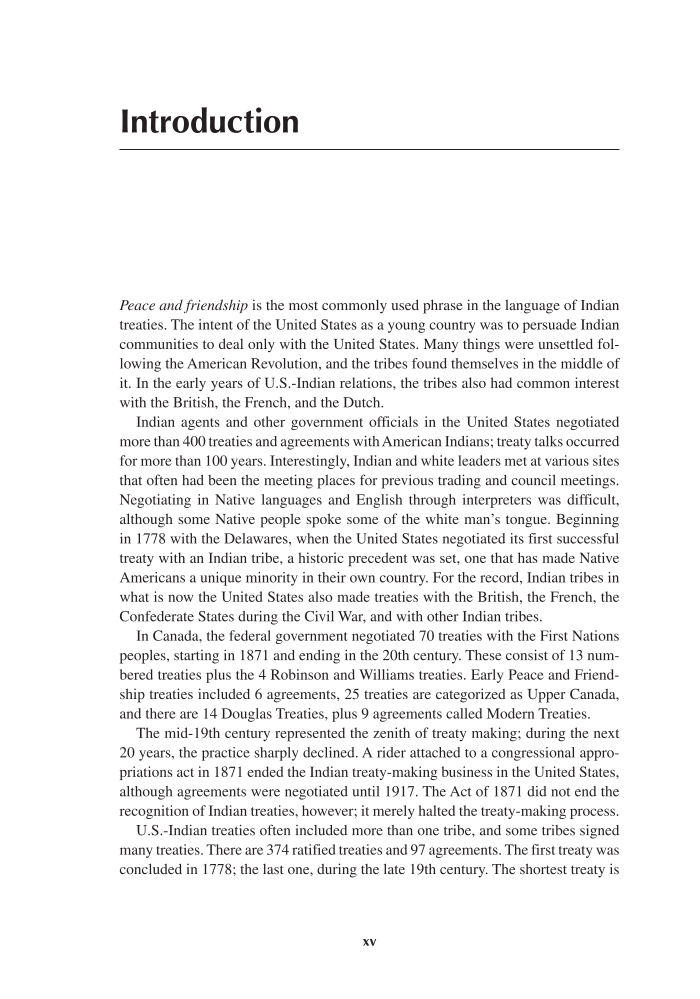xv Peace and friendship is the most commonly used phrase in the language of Indian treaties. The intent of the United States as a young country was to persuade Indian communities to deal only with the United States. Many things were unsettled fol- lowing the American Revolution, and the tribes found themselves in the middle of it. In the early years of U.S.‑Indian relations, the tribes also had common interest with the British, the French, and the Dutch. Indian agents and other government officials in the United States negotiated more than 400 treaties and agreements with American Indians treaty talks occurred for more than 100 years. Interestingly, Indian and white leaders met at various sites that often had been the meeting places for previous trading and council meetings. Negotiating in Native languages and English through interpreters was difficult, although some Native people spoke some of the white man’s tongue. Beginning in 1778 with the Delawares, when the United States negotiated its first successful treaty with an Indian tribe, a historic precedent was set, one that has made Native Americans a unique minority in their own country. For the record, Indian tribes in what is now the United States also made treaties with the British, the French, the Confederate States during the Civil War, and with other Indian tribes. In Canada, the federal government negotiated 70 treaties with the First Nations peoples, starting in 1871 and ending in the 20th century. These consist of 13 num- bered treaties plus the 4 Robinson and Williams treaties. Early Peace and Friend- ship treaties included 6 agreements, 25 treaties are categorized as Upper Canada, and there are 14 Douglas Treaties, plus 9 agreements called Modern Treaties. The mid-19th century represented the zenith of treaty making during the next 20 years, the practice sharply declined. A rider attached to a congressional appro- priations act in 1871 ended the Indian treaty-making business in the United States, although agreements were negotiated until 1917. The Act of 1871 did not end the recognition of Indian treaties, however it merely halted the treaty-making process. U.S.‑Indian treaties often included more than one tribe, and some tribes signed many treaties. There are 374 ratified treaties and 97 agreements. The first treaty was concluded in 1778 the last one, during the late 19th century. The shortest treaty is Introduction
Document Details My Account Print multiple pages
Print
You have printed 0 times in the last 24 hours.
Your print count will reset on at .
You may print 0 more time(s) before then.
You may print a maximum of 0 pages at a time.




























































































































































































































































































































































































































































